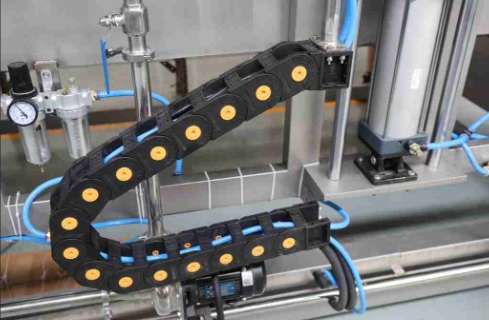The difference between drag chain cables and traditional cables
In the field of modern industrial automation, the choice of cables is crucial. Cables are not only the basis for equipment operation, but also the key factor to ensure the efficient operation of production lines. There are significant differences between flexible cables and traditional cables in design, performance and application.

1. Differences in structural design
Flexible cables use high-strength, multi-strand, finely twisted bare copper wires as conductors, which are highly flexible and resistant to bending. Their structure usually includes a multi-layer core design that is twisted into bundles to ensure that the internal structure of the cable remains stable during frequent bending and movement. Traditional cables usually use single-layer cores, which are prone to "spinning" during high-frequency bending, resulting in conductor breakage and shortened cable life.
2. Differences between materials and processes
The insulation and sheath materials of flexible cables are usually made of modified polyvinyl chloride (PVC) or thermoplastic polyurethane (PUR), which are not only wear-resistant and oil-resistant, but also maintain good performance under extreme temperatures. Traditional cables mainly use ordinary PVC materials, which have poor wear resistance and aging resistance and cannot meet the use requirements in complex environments.
3. Differences in performance
Flexible cables excel in terms of bending resistance, maximum speed, and acceleration, and are suitable for high-frequency movement and bending applications. For example, the bending radius of Anyang CF series high-speed cables can reach 6X the cable outer diameter, and the service life can reach more than 10 million times. Traditional cables are obviously insufficient in these performance indicators and are not suitable for high-intensity industrial applications.
4. Differences in application scenarios
Cables are widely used in industrial automation equipment, robots, CNC machine tools and other equipment that need to move frequently. For example, in a production line, robots need to move and rotate constantly, and flexible cables can ensure the stability of signal and power transmission. Traditional cables are mostly used for fixed power transmission and are not suitable for high-intensity dynamic use environments.
5. Selection Suggestions
When selecting cables, the appropriate cable type should be selected according to the specific use environment and requirements. For occasions that require high-frequency movement and bending, it is recommended to choose Anyang flexible cables. Anyang not only undergoes rigorous testing on materials and processes to ensure high reliability and long life, but also provides professional selection guides to help customers choose the most suitable products.